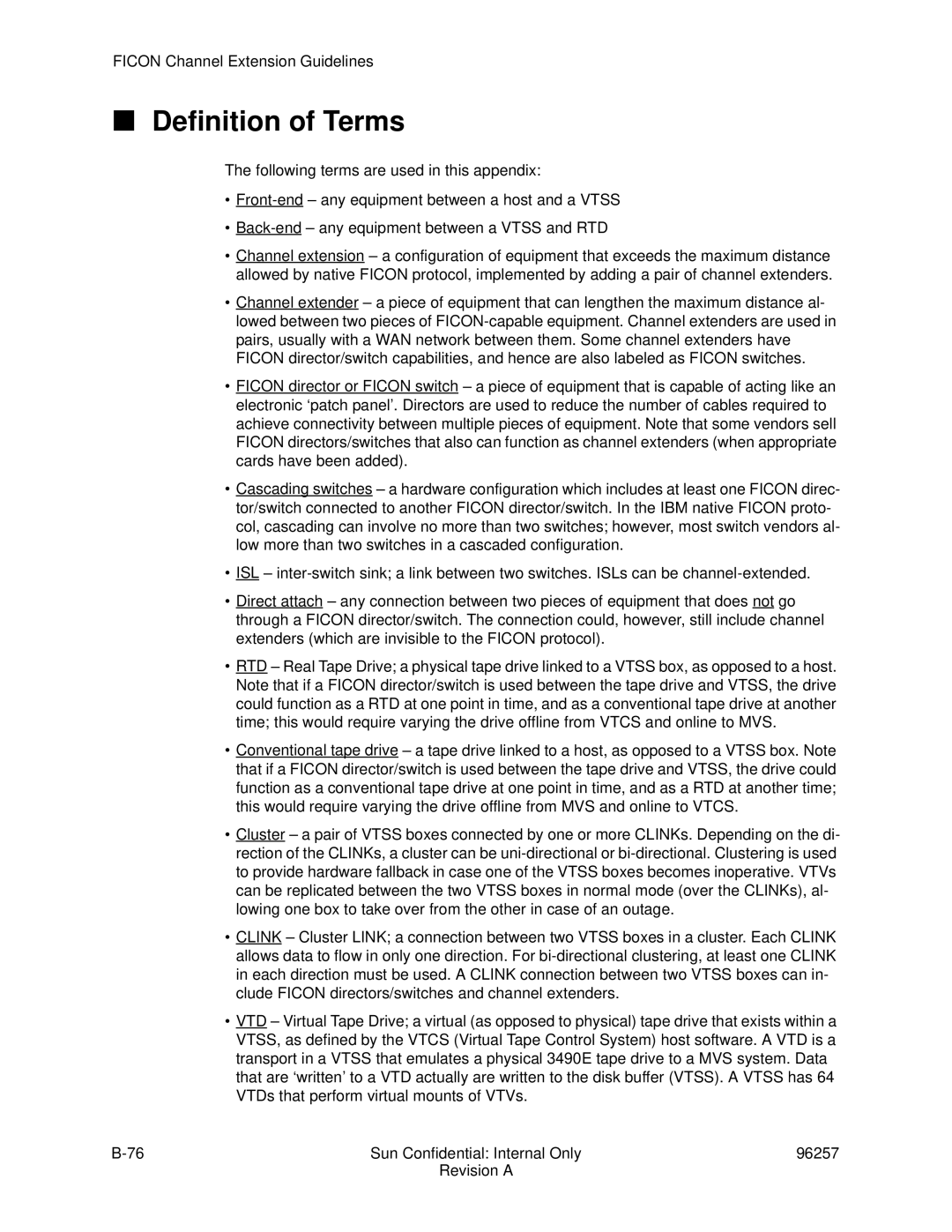FICON Channel Extension Guidelines
■Definition of Terms
The following terms are used in this appendix:
•
•
•Channel extension – a configuration of equipment that exceeds the maximum distance allowed by native FICON protocol, implemented by adding a pair of channel extenders.
•Channel extender – a piece of equipment that can lengthen the maximum distance al- lowed between two pieces of
•FICON director or FICON switch – a piece of equipment that is capable of acting like an electronic ‘patch panel’. Directors are used to reduce the number of cables required to achieve connectivity between multiple pieces of equipment. Note that some vendors sell FICON directors/switches that also can function as channel extenders (when appropriate cards have been added).
•Cascading switches – a hardware configuration which includes at least one FICON direc- tor/switch connected to another FICON director/switch. In the IBM native FICON proto- col, cascading can involve no more than two switches; however, most switch vendors al- low more than two switches in a cascaded configuration.
•ISL –
•Direct attach – any connection between two pieces of equipment that does not go through a FICON director/switch. The connection could, however, still include channel extenders (which are invisible to the FICON protocol).
•RTD – Real Tape Drive; a physical tape drive linked to a VTSS box, as opposed to a host. Note that if a FICON director/switch is used between the tape drive and VTSS, the drive could function as a RTD at one point in time, and as a conventional tape drive at another time; this would require varying the drive offline from VTCS and online to MVS.
•Conventional tape drive – a tape drive linked to a host, as opposed to a VTSS box. Note that if a FICON director/switch is used between the tape drive and VTSS, the drive could function as a conventional tape drive at one point in time, and as a RTD at another time; this would require varying the drive offline from MVS and online to VTCS.
•Cluster – a pair of VTSS boxes connected by one or more CLINKs. Depending on the di- rection of the CLINKs, a cluster can be
•CLINK – Cluster LINK; a connection between two VTSS boxes in a cluster. Each CLINK allows data to flow in only one direction. For
•VTD – Virtual Tape Drive; a virtual (as opposed to physical) tape drive that exists within a VTSS, as defined by the VTCS (Virtual Tape Control System) host software. A VTD is a transport in a VTSS that emulates a physical 3490E tape drive to a MVS system. Data that are ‘written’ to a VTD actually are written to the disk buffer (VTSS). A VTSS has 64 VTDs that perform virtual mounts of VTVs.
Sun Confidential: Internal Only | 96257 | |
| Revision A |
|
